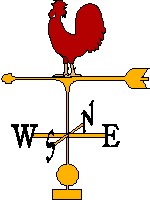 WANTED:
WANTED:
This page is a new addition to the Society’s website.
We would like to include local legends from all around British Columbia and readers are invited to submit tales from their region.
Please send them to us at info@folklore.bc.ca, or write to us at:
The British Columbia Folklore Society
FORBIDDEN PLATEAU
Our thanks to Pete Ballantyne for sending in the link to Campbell River, on the Vancouver Island ONSITE website,
that made us aware of the local legend relating to Forbidden Plateau.
∼
Located on the lower slopes of Mount Becher, Forbidden Plateau is better known today as a year round recreation area for biking, hiking, climbing and fishing but, in the history of the Comox First Nations, the Plateau has a much darker side. Slavery amongst the coastal tribes was common at one time and, for the most part, this was carried out by enemies attacking in canoes from the sea. When the Comox where threatened in this way they would send their women and children up to the Platea for safekeeping. But, on one occasion when they were under attack by the Cowichans, the women and children vanished without a trace and, since then, the Plateau has become taboo for it was believed that it was inhabited by evil spirits who had consumed those they had sent.
FERNIE
We are grateful to the Fernie Chamber of Commerce
info@ferniechamber.com
for sending us the following three local legends.
The Legend of Fernie
William Fernie, (1837-1921) founder of the city, met a tribe of Indians during one of his prospecting trips (1887). He noticed one of the Indian Chief’s daughters was wearing a necklace of shining, black stones. Knowing that these stones were coal, William Fernie asked about their source. The Indian Chief agreed to show Fernie where the stones had been found, with the condition that the prospector marry the princess. But, after leaving the location of the coal deposits, William Fernie refused to marry the princess. The Indian Chief was angered by this and put a curse on the valley. The valley would suffer, he said, from fire, flood and famine.
As a reminder of the curse, the ghost rider of Mount Hosmer can be seen each sunny, summer evening on a rock-face high above the city. The “ghost” is a spectacular shadow in the form of an Indian Princess sitting on a horse with her father, the Chief, walking beside her, leading the horse.
The first fire, which occurred in 1904, destroyed a large portion of the wooden business section of the city. The worst disaster, however, came on August 1st 1908 when a forest fire practically destroyed the whole city, leaving only 32 buildings standing. In 1916 more damage was done when the Elk River overflowed its banks and flooded sections of West Fernie. The near-famine conditions of the great depression made Fernie believe the curse would never end.
On August 15th 1964 members of the Kootenai tribe, led by Chief Ambrose Gravelle, known as Chief Red Eagle, assembled in Fernie for the ceremonial lifting of the Fernie Curse. Mayor James White made amends for the wrong done to the Kootenai People by William Fernie, by smoking the “pipe of peace” with Chief Red Eagle.
2nd VERSION: The Fernie Chamber of Commerce files also have a brief, second account of the curse…
The city of Fernie is a prosperous and tranquil-looking community of some 5,000 amid snowy peaks. Its tranquil appearance is misleading however. In a region where disaster has struck frequently and brutally, the town’s history records more tragedies than any other community in the Pass. While other communities such as Frank, Bellevue, Hillcrest and Coleman have escaped with one major calamity, Fernie has experienced a series. They range from mine explosions (one alone killing 128 men) to two fires – the worst a conflagration that left virtually all 6,000 residents homeless.
While the general reason for these disasters point to man’s carelessness or nature’s excesses, there are those who blame the “curse” for the disasters that have befallen the community. According to legend the curse originated when a group of men were prospecting for minerals near Crowsnest Mountain. Among them was William Fernie, after whom the community is named. One night prior to the 1890’s when the prospecting group was camped beside an Indian band, William Fernie noticed that the Chief’s daughter was wearing a necklace of shiny, black stones. He recognized them to be pieces of coal. Thwarted in his effort to find their source, he wooed the Indian girl and learned her secret. Then he deserted her. In great anger her mother invoked a curse on the Elk Valley and all its inhabitants “who will suffer from fire, flood, strife and discord; all will finally die from fire and water!”
∼
Legend of Griz
(Mascot of Fernie)
We at Snow Valley have not always been graced with the fine snow conditions we now enjoy. Not until recently did we come to realize how we became the beneficiary of some of the best packed and powder skiing in Western Canada.
As the legend goes, a baby boy was born back in the year of 1879 in the midst of a cruel and bitter winter. It is said that the baby was born in a grizzly bear’s cave high in the mountains. Sometime later the resident bear awoke, mean and ravenously hungry. A terrible battle ensued between the two – one fighting for his life and the other for his dinner.
Well folks, as the story continues, the people went into the mountains the very next day to discover the source of all the noise from the previous night. They looked high and low on the mountain now known as Snow Valley. Once one of the men thought he saw a little boy wearing a bear coat and hat nimbly leaping from rock to rock up on the lofty peaks. His friends laughed at him and jokingly accused him of seeing things and the incident was soon forgotten.
Just recently, some of our avid ski tourers were ascending the peaks above the Snow Valley Ski area in the midst of a heavy snowstorm. While taking a short breather they happened to glance up at the peak they were climbing. There, on the very summit, stood a fantastic sight. While of standard height, this man had shoulders six feet wide and carried an enormous musket eight feet long. The bulk of the man’s estimated 300 pounds was made to look even more awesome by the bristly, grizzly coat he wore. A bear hat was pulled down, shadowing his eyes. As the skiers watched, he stood shooting the giant musket into the clouds and still more snow fell from the sky above. This, of course, delighted the skiers who loved that special brand of powder snow.
The skiers schussed down the mountain and excitedly told everyone they met of their experience. Some of the town’s elders remembered the sighting of a little grizzly-clad boy so long ago and the discovery of massive, bare-footed tracks upon the snow-covered peaks.
In recognition and admiration of the man who became known as “GRIZ”, the town’s people held a festival all week. Sporting events, competitions, parades and gatherings marked the gala week. The citizen who embodied the spirit of “GRIZ” through that week was made honorary “GRIZ” for the rest of the year. To this day, this festival continues every February in tribute to our powder king. The best powder and packed skiing conditions in the west also continue to blanket our mountains.
∼
Legend of the Three Sisters
(Three Sisters Mountain and Proctor Mountain, Fernie)
According to legend, many years ago a young Indian Chief found great difficulty in choosing a bride. There were three very talented and beautiful maidens to choose from. The older Chiefs asked the gods to aid them. The Indian gods considered indecision a grievous sin; therefore, the punishment dealt out was severe.
The young Chief was turned into a mountain where, each day, he could look at what he could never have. The maidens’ grief was so great that all three maidens prayed that they might be turned into mountains also. Their prayers were answered. As we gaze at the Three Sisters and Proctor Mountain we are looking at the three maidens and the young Chief.

